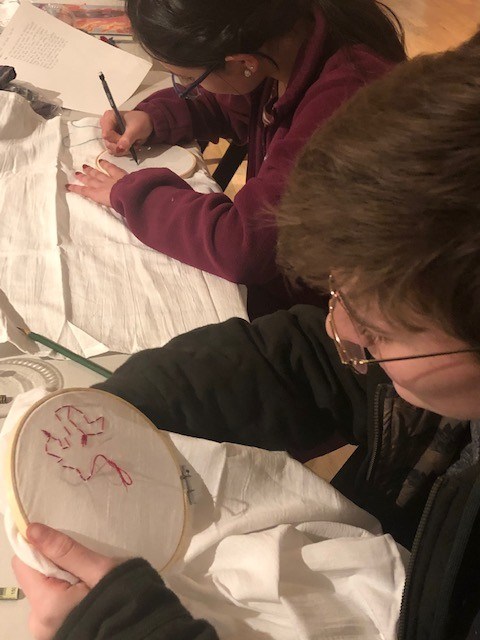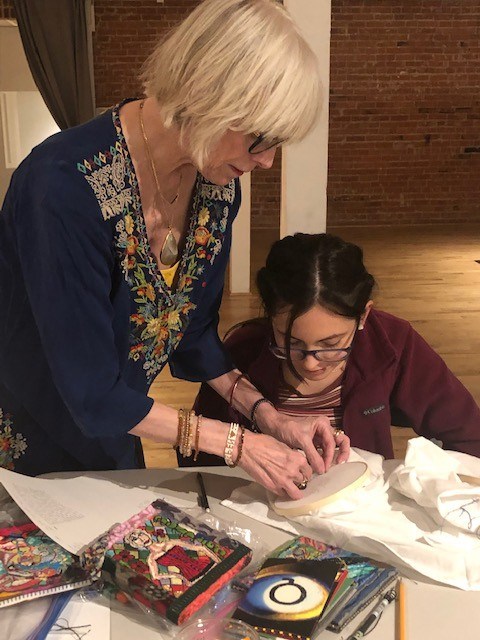A group of eight teens this spring will have a new creative outlet to reflect on the state of the world thanks to a collaboration between Longmont’s Firehouse Art Center and the Boulder Museum of Contemporary Art.
The two art centers have teamed up to offer a virtual internship for young artists. The effort, part of BMoCA’s Studio Project Internship started in 2007, will connect teenagers to local artists, who will guide them on how they can use their artistic talents to talk about difficult issues and their impact.
One such difficult issue that could have derailed this year’s Studio Project Internship — the COVID-19 pandemic — has instead prompted a shift in format.
The Studio Project’s spring 2020 interns were able to complete their projects, but had to adapt to the COVID-19 restrictions and complete their critiques virtually, according to Firehouse Executive Director Elaine Waterman.
In November, BMoCA announced on its Facebook page that the collaboration with Firehouse was going virtual in 2021.
To participate in this year’s internship, teens applied through BMoCA and the Firehouse. When students applied, they were asked to share their feelings regarding art, social issues and to provide details on their experience with art, galleries and event planning, Waterman said.
The internship has two goals: creating art and making the world a better place, Waterman said.
Among this spring’s interns is Lilia Alizadeh, 16, a Silver Creek High School junior. Alizadeh, who said she has always believed in social justice, is a member of the Silver Creek Environment Club and the nationwide student-led organization, Diversify Our Narrative. And she has been creating art for as long as she can remember.
“I heard about the studio art internship through the Firehouse Membership Center on Facebook, and was immediately intrigued,” Alizadeh said, “The opportunity felt perfect — two of my biggest passions in one project, targeting my age group.”
The interns lead the project, choosing a topic based on social issues that affect them. They then are paired with an artist who creates art regarding the same issue. Once the interns are working with an artist, they are connected to a local nonprofit organization.
“The interns learn from the organization the what, how and why of their mission and they work with the artist to express, reflect and comment on the issue through art, often learning a new style and medium,” Waterman said. “Once the artwork is completed, the interns work as a team with the artist and organization to plan an event that shares the art and the mission with their peers.”
 Participants in the 2020 Studio Project Internship session work on a project. Courtesy photo
Participants in the 2020 Studio Project Internship session work on a project. Courtesy photoFowler is a Denver artist who has been painting murals in Colorado. His series, “Walls of Gratitude,” depicting medical professionals, teachers, sanitation workers, butterflies, and George Floyd, has been featured in The New York Times, Westword and on CBS Denver.
The intern will attend three to four virtual one-hour meetings for 17 weeks, with the possibility of one in-person meeting, and an exhibit at the end of the session in May. Some interns may be able to earn school credit for the program.
“I hope to learn about how to critique and analyze temporary art, as well as the more technical aspects of creating art,” Alizadeh said.
The Studio Project Internship values the opinions and ideas of its interns, Waterman said. She said she maintains neutrality when presenting artists and organizations to interns to avoid influencing their decisions.
“The best part of being the coordinator is providing opportunities for teens — typically portrayed as blase and indifferent to the world around them with their faces in their phones — to find an area of social change that they are passionate about and to ignite a spark that continues far beyond the internship,” Waterman said.



